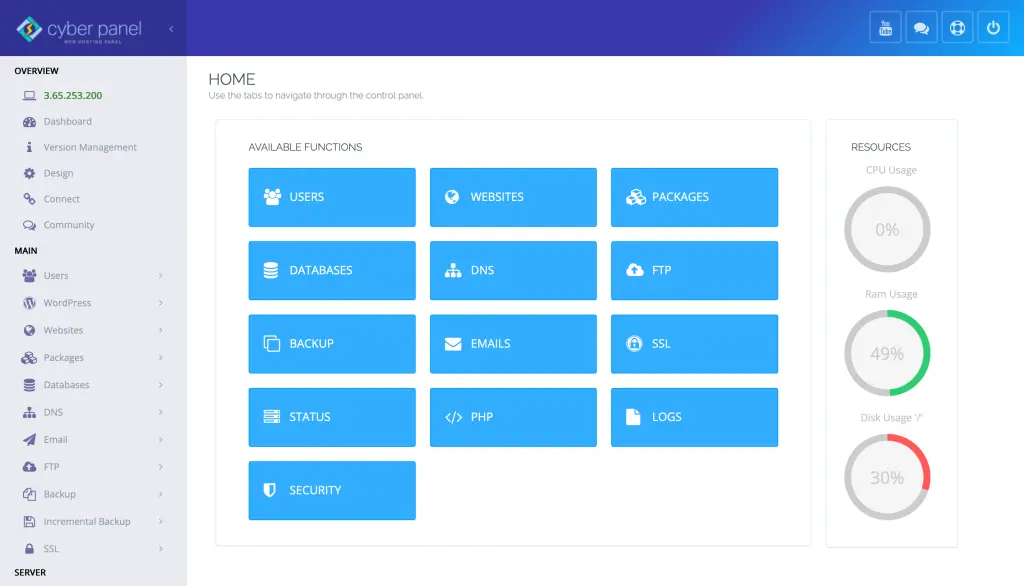Have you ever wanted to make a shortcut to a file or folder in Linux, like you would in Windows? This is exactly what Linux soft links (symbolic links) do! This is where soft link Linux comes into play: instead of copying these files to multiple directories, it is possible to create GUST and reference or point to them from different places to take up less space and keep things organized.
In this guide, we will discuss everything you need to know about soft links, the process of creating soft link Linux, how to list the soft and hard links in a folder, and how to create soft link Linux. This article contains this information along with real executable commands and outputs so you can apply these in real life.
Let’s dive in!
What is Linux Soft Link?
A soft link (SYMBOLIC LINK) is a file that points or references to another file or directory. While a hard link points to the inode of the original file, a soft link is a placeholder in a different file that has a path to the other file.
Linux Soft Link: Characteristics and Important Points
✔️ They do not save your actual data, only a pointer to the original file.
✔️If the original file is removed, the soft link gets broken.
Get exclusive access to all things tech-savvy, and be the first to receive
the latest updates directly in your inbox.
✔️ They can work across file systems, unlike hard links.
✔️ Soft links can refer to both files and directories.
How to Create Linux Soft Link
The command for making a soft link in Linux is very simple, it is ln -s.
Basic Syntax
ln -s <target_file_or_directory> <soft_link_name>Create Linux Soft Link: Practical Examples
Example 1: Create a Soft Link for a file
touch original.txt
ln -s original.txt softlink.txt
ls -lOutput:
lrwxrwxrwx 1 user user 12 Feb 5 12:00 softlink.txt -> original.txt???? The l at the beginning of the output indicates that softlink. txt is a Linux soft link.
Example 2: How to Soft Link a Directory
mkdir /home/user/docs
ln -s /home/user/docs /home/user/mydocs
ls -lOutput:
lrwxrwxrwx 1 user user 12 Feb 5 12:05 mydocs -> /home/user/docsSo now mydocs acts like docs without creating a duplicate directory!
Linux List the Soft and Hard Links in a Folder
By this command you can see all soft and hard links in a folder:
ls -lOutput:

-rw-r--r-- 1 user user 1024 Feb 5 12:10 original.txt
lrwxrwxrwx 1 user user 12 Feb 5 12:15 softlink.txt -> original.txt✔ Soft links — l (symbolic links)
✔ Hard links appear like regular files but point to the same inode.
View in Browser For Full Context:
find . -type l -lsThis shows all soft links within the folder.
How to Remove a Linux Soft Link
To remove a Linux soft link, use the rm or unlink command.
rm softlink.txt
# OR
unlink softlink.txtThis removes only the soft link, not the original file!
How to Check if a File is a Soft Link in Linux?
Use the ls -l command:
ls -l softlink.txtIf the first letter is l, it’s a Linux soft link.
Another way:
readlink softlink.txtThis command returns the target file path if it’s a soft link Linux.
Difference Between Soft Link and Hard Link in Linux
| Feature | Soft Link Linux | Hard Link |
|---|---|---|
| File System Support | ✅ Works across file systems | ❌ Only within the same file system |
| Directory Linking | ✅ Can link to directories | ❌ Cannot link to directories |
| Dependency on Target | ❌ Breaks if the target is deleted | ✅ Still works after target deletion |
| Inode Sharing | ❌ Has a different inode | ✅ Shares the same inode |
| Storage Efficiency | ✅ Saves space (no duplication) | ✅ Saves space (no duplication) |
| Speed | ❌ Slightly slower (resolves path) | ✅ Faster (direct access) |
CyberPanel Management of Linux Soft Link

CyberPanel is a powerful web hosting control panel designed to simplify Linux server management. It assists in soft link setup, maintenance, and problem-fixing in Linux environments.
How to Create Soft Links
????File Management – Create soft links directly using CyberPanel’s File Manager with an easy-to-use interface.
???? Terminal Access – CyberPanel comes with built-in Terminal accessing which allows users to execute ln -s commands in the terminal rather than switching to SSH clients.
???? Automated Backups – As soft links do not have any physical data, the automated backup system provided by CyberPanel backs up those linked files as well.
???? Security – CyberPanel takes care of file permissions and prevents changes to essential symbolic links.
Using CyberPanel for Linux Soft Links Manage
1️⃣ Access File Manager on CyberPanel
2️⃣ Choose the file or directory that you want to generate a soft link for.
3️⃣ Use the terminal to run:
ln -s /path/to/original /path/to/link4️⃣ Verify the link using:
ls -l5️⃣ Remove the soft link (in CyberPanel, using file manager or terminal commands, if needed.
FAQs: Linux Make Soft Link
1. How to see soft and hard links in a directory?
Display using ls -l or find. -type l -ls.
2. What happens if I delete a soft link in Linux?
It only removes the soft link; the target file is not touched.
3. How do I make a soft link for a directory in Linux?
Soft links can point to directories which hard links cannot.
4. How can I determine if a file is a soft link?
You have to use ls -l or readlink <soft_link> commands to determine if a file is a soft link.
5. What is the difference between the two types of links (soft and hard)?
Hard links share inodes, soft links are symbolic references.
6. How do I delete a soft link Linux?
You can use rm softlink or unlink softlink commands to delete Linux soft link.
Final Thoughts!
Soft links in Linux are a very practical way to manage files and folders without creating redundant copies. You can create a soft link in Linux using the ln -s command to organize files and access important files easily.
Linux hosting also benefits from easy management of symbolic links with CyberPanel due to its File Manager, Terminal, and security features, which make soft link Linux easier to manage.
Begin utilizing Linux soft links now to simplify your file organization!



